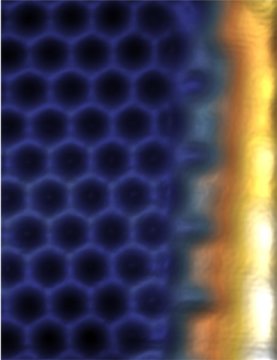Scientists have recently created a new spintronics material called bismuthene, which has similar properties to that of graphene. Because it works at room temperature instead of the incredibly cold, as low as -450 F, bismuthene makes the idea of spintronics information transmission much more realistic. Bismuthene is a combination of silicon carbide substrate and bismuth atoms.
If you’ve never heard of spintronics before, it is a form of nanoscale electronics based on the electron’s spin rather than its charge. If made viable, spintronics could change the world of electronics by providing faster data transfers, low energy consumption, and having four states, rather than only two states as in traditional computing. Because of it quantum state manipulation, bismuthene has the potential accelerate computation and free manufacturers from the difficulties involved in the fabrication of sub-10nm semiconductors.

Developed in Germany by a team of scientists from the University of Wurzberg, bismuthene consists of a layer of bismuth, only as thick as a single atom, on top of a silicon carbide substrate. When laid on top of the substrate the bismuth forms a honeycomb pattern, the same as graphene. But, unlike graphene, bismuthene creates a chemical bond with the silicon carbide, which remains conductive and also insulative in the center.
For spintronics to function, there cannot be any short circuits through the substrate or material, therefore the insulative center is key.
Although this is very new research, the research team have had run their own successful experiments and are optimistic about the future. However, it is doubtful that we will see bismuthene in commercial electronics anytime soon, much more work is needed to develop the material into usable products but when they do they are sure to be exceptional.
Related Links;
- QUANTUM COMPUTING MOVES ONE STEP CLOSER WITH SPINTRONICS MATERIAL CREATION
- Breakthrough in spintronics
More News to Read











